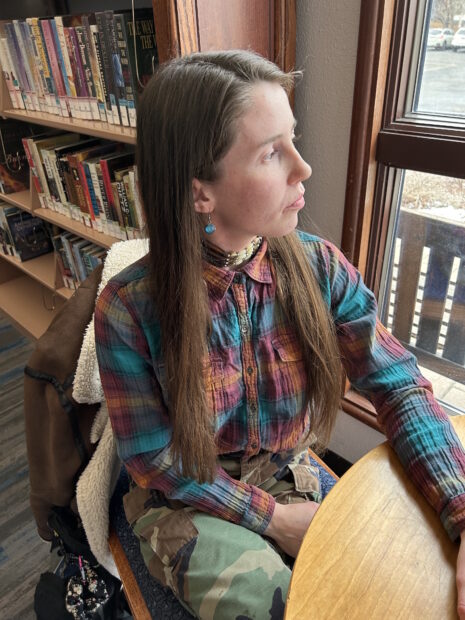This is the first in a four-part series on how the opportunity to choose another school benefited the academic health of four Idaho families. Published Monday: Kuna’s dual language program helps students stay connected with Colombian family. Published Tuesday: 13-year-old Jonah Layton finds success at college. Published Wednesday: Mother of 10 children chooses to homeschool because it is “the best option.”
Behind the students seated in front ready to engage and eager for their teacher’s attention, 13-year-old Cheyenne Anderson sat in the back of class at Kuna Middle School with her hopeless grades and neon pink hair.
The now confident 22-year-old doesn’t think a lot about that dark time in her young life, because today she’s busy installing computer networks or learning about business at the College of Western Idaho.

The distractions and drama of middle school, coupled with the breakup of her parents, were the catalyst for her social awkwardness and failing grades. Her teachers were sympathetic but had written her off.
“If things were a challenge, I didn’t want to pursue them. And I felt like there wasn’t much support if I were to (struggle),” Cheyenne recalled. “I don’t think they had much hope of me graduating at all.”
After middle school, she tried the self-paced environment of virtual school, one of many options available to Idaho families: traditional brick-and-mortar or virtual schools, online or in-person charters, career technical education, magnet or alternative schools, and college preparatory academies.
As a high school freshman, she failed all but one of her virtual classes, so she and her father, Donald, searched for an alternative to dropping out.
Because Cheyenne’s family did not want her going the GED route, they took a chance on the charter school Idaho Distance Education Academy, which changed its name in 2019 to Gem Prep Online. Gem Prep prepares students to succeed through specialized coursework and early access to college.
Cheyenne is affiliated with the Ojibwe tribe through her grandfather, Donald Brown, who as a child was taken from his family and placed in a residential boarding school. She explores her heritage through learning the traditional Ojibwe language, beadwork, moccasin making, and jingle and fancy dancing.
Determined to see her graduate, her new teachers said “we can fix this,” Cheyenne recalled. “They engaged a lot more, because the teachers really cared. If you were falling behind or had a bad grade, the teachers would email you that day … asking what they could help with.”
IDEA offered Cheyenne a personalized approach. Although it’s an online school, teachers and tutors met with her in person each week.
“That amount of care,” she said, “really made me want to keep going.”
She describes her education experience as “in tune with me as a student.” On the other hand, traditional public schools rely on universal teaching styles and testing methods, even though students perform at different social and academic levels.
“Suddenly, I could face challenges and it didn’t seem so insurmountable,” Cheyenne said.
That differentiated approach made all the difference: she graduated on time in 2018, earned a 3.3 GPA her senior year, and left high school with college credits.

“I’m proud of my family and everything we’ve been through and staying together through all hardships. And academically I’m proud of graduating, and I’m proud of getting into college,” she said.
To help pay for college expenses, Cheyenne is working for her father’s small business, Enterprise Technologies, repairing electronics and installing tech hardware. She is pursuing a business degree at CWI, and she plans to start her own tech business.
Because Cheyenne found the right choice of schools, she traded in her black, goth clothing and pixie haircut for an identity that suits her — success.
Gem Prep’s one virtual school and five brick-and-mortar schools serve 4,500 K-12 students. To learn more about the school, click here. To learn more about the types of schools available to Idaho families, visit EdNews here.
